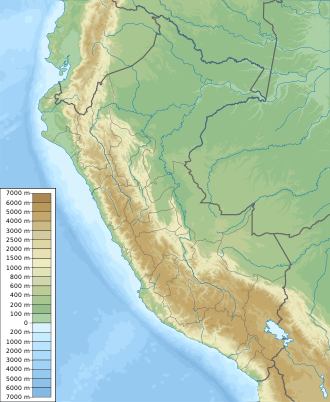Ecology
Flora
Five species of mangrove dominate the area: black mangrove ( Avicennia germinans ), white mangrove ( Laguncularia racemosa ), button mangrove ( Conocarpus erectus ) and two species of red mangrove ( Rhizophora mangle and Rhizophora harrisonii ). [2] [3] Seasonally dry forest and scrubland can also be found in some parts of the sanctuary; tree species representative of this ecosystem being: Pithecellobium excelsum , Cordia lutea , Mimosa acantholoba , Parkinsonia praecox , Ceiba trischistandra , Loxopterygium huasango , Bursera graveolens , Cochlospermum spp., Prosopis pallida , Capparis scabrida ; and some seasonal herbaceous species: Aristida adscensionis , Bouteloua aristidoides , Stylosanthes spp., Crotalaria spp., Tephrosia cinerea , Cyperus spp., Scirpus spp., Distichlis spicata , Antephora hermaphrodita , Paspalum racemosum , Ipomoea spp., and Bidens pilosa . [2] [3]
Recreation
It is possible to navigate, by kayak or canoe, the waterways inside the mangrove forest in the zone accessible to tourists (137,5 hectares = 4,61% of the sanctuary). [2] In this area activities like walking on beaches, birdwatching and observation of the use of the mangrove ecosystem by the locals are also allowed. [2]
Scientific research has been a constant activity since the creation of the sanctuary. [2] [3]
Environmental issues
The clearance of mangrove forests and nearby seasonally dry forests to open land for shrimp farming and agriculture has an enormous impact on local ecosystems. [3] Shrimp farms also capture and grow larva of local shrimp species from the mangrove forests with help of local inhabitants. [3] These farms and agricultural lands also pollute the area with industrial waste and agricultural runoff. [3]
Illegal extraction of edible crustaceans and bivalves; conflicts over land use rights with nearby villages and litter and wastewater discharge from nearby towns into the mangrove forest canals are also environmental issues affecting the sanctuary. [3]
Introduced plant species like Tephrosia purpurea, Dactyloctenium aegyptium, Eragrostis cilianensis and Brachiaria mutica are found growing inside this protected area. [3]
The American crocodile is no longer present in the area, rendering this species as one of the most threatened in the country. [2]
This page is based on this
Wikipedia article Text is available under the
CC BY-SA 4.0 license; additional terms may apply.
Images, videos and audio are available under their respective licenses.


